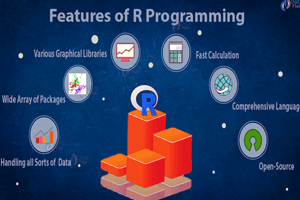Introduction of R language
R is an interpreted programming language (consequently likewise called a scripting language), which implies that your code doesn’t need a compilation before running. This is a high-level language wherein you don’t approach the inward activities of the PC where you are running your code; everything is inclining toward helping you examine favorable information.
R made its first appearance in 1993 and was created by Ross Ihaka and Robert Gentleman at the University of Auckland, New Zealand. It is currently developed under the R Development Core Team. A pre-compiled version of R language is freely available for various operating systems(OS) like Windows, Mac, and Linux under the GNU General Public License.
R is used for Statistical inference, Data analysis, Machine learning algorithms and also used as a programming language as well as a software environment for statistical analysis, graphics representation and reporting. The core of R is an interpreted computer-oriented language that permits branching and looping also as modular programming using functions. R language lets in integration with the techniques written in the C, C++, .net, Python or FORTRAN languages for performance.
Features:
- R is a very much evolved, basic and effective programming language that involves conditionals, loops, user-defined recursive functions, input and output facilities.
- R lets in appearing the virtual statistical computation to save time and provide the mistake-loose content.
- R has some statistical Features in which it includes Mean, variance, median and some graphical features like Basic plots, graphic maps.
- It also has a Probability distribution feature like Beta, Binomial.
- R language has an effective data handling approach and storage facility.
- R graphical techniques for data analysis output either directly display to the pc, or are often printed on paper.
R is the maximum of widely used statistics programming language. It is the first choice of the data scientists and supported by a vibrant and talented community of contributors. Even Social networking companies are using R to monitor their user experience. R may be a useful gizmo to explore and investigate the info.
R is an interpreted programming language (consequently likewise called a scripting language), which implies that your code doesn’t need a compilation before running. This is a high-level language wherein you don’t approach the inward activities of the PC where you are running your code; everything is inclining toward helping you examine favorable information.
R made its first appearance in 1993 and was created by Ross Ihaka and Robert Gentleman at the University of Auckland, New Zealand.
R is used for Statistical inference, Data analysis, Machine learning algorithms and also used as a programming language as well as a software environment for statistical analysis, graphics representation and reporting.
Some features of R language are:
What is R programming language?
Who developed R programming language?
What is R language used for?
What are the features of R language?
- R is a very much evolved, basic and effective programming language that involves conditionals, loops, user-defined recursive functions, input and output facilities.
- R lets in appearing the virtual statistical computation to save time and provide the mistake-loose content.
- R has some statistical Features in which it includes Mean, variance, median and some graphical features like Basic plots, graphic maps.
- It also has a Probability distribution feature like Beta, Binomial.




